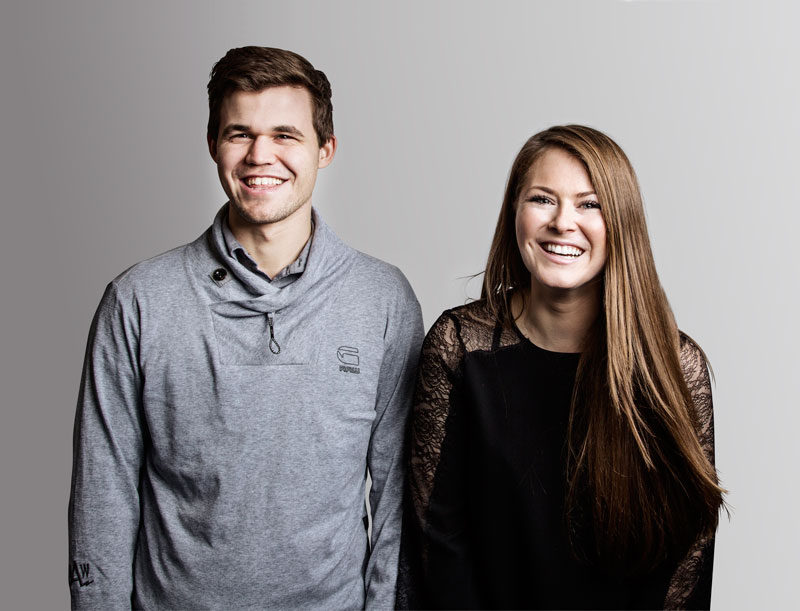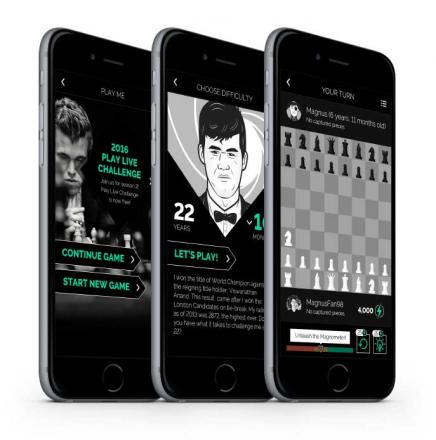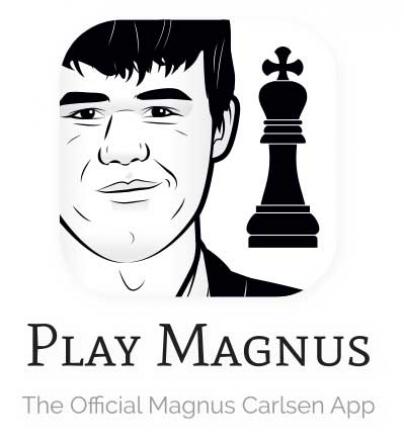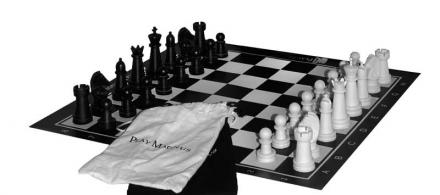Marketing the ‘Mozart of Chess’

Until Kate Murphy went into business with Magnus Carlsen, she wasn’t a chess player. She has since taken up the game, even managing to beat Magnus, the number-one ranked chess player in the world and holder of two world titles, who only recently turned 25. She fared better than chess icon Garry Kasparov, who played then 13-year-old Magnus to a draw, and Bill Gates, who was defeated in 12 seconds by the then world champion. Little wonder the youngest-ever grandmaster of chess (at 13) was described in a 60 Minutes profile as the ‘Mozart of Chess’.
There’s a footnote to Kate’s achievement, though: she chalked up her win on the Play Magnus app, a game that enables chess fans to challenge a virtual version of Magnus at 24 different ages. Beginners can try their hand at chess with five-year-old Magnus; more experienced players can compete against an older version of the champion. Kate has made it to the seven-year-old Magnus level.
Her lack of chess skills weren’t an impediment to being hired as CEO of Play Magnus. She landed the top job after putting together a compelling business case demonstrating how the Magnus Carlsen brand could grow beyond Norway, Europe and chess hot spots like India, to become a global force.
How the non-Norwegian-speaking, recent Queen’s MBA graduate arrived at this turning point is a testament to Kate’s drive and perseverance, with a dash of wish fulfillment thrown in.
Entrepreneur at Heart
Kate was born and raised in the Vancouver area. A self-professed born entrepreneur, she started her first business, a candle company, at the age of 12. While an undergraduate business student at Simon Fraser University, she co-founded another new venture, a touring dance convention featuring performers from the U.S. and Canadian TV show, So You Think You Can Dance. After graduating, she worked for the British Foreign Office coordinating visits by U.K. dignitaries to the Vancouver Olympic Games. Interesting as the job was, Kate’s entrepreneurial instincts were being stifled.
“I knew a bachelor’s degree wasn’t going to cut it if I wanted to run my own business,” Kate says of her decision to pursue an MBA. Several factors came into play in choosing Queen’s, she says, “but what really sealed it for me was Queen's collaboration with the Forté Foundation (a non-profit organization focusing on the promotion of women in business) and an international exchange, specifically the opportunity to study at ESSEC in Paris.” A keen traveller, Kate had gone on exchange while at SFU and completed the backpacking-through-Europe rite of passage after graduating.

Her Queen’s MBA experience lived up to expectations. Lifelong friendships were forged and the term she spent studying luxury-brand management at ESSEC has influenced her career path. As so often happens in Paris, romance bloomed. Kate became involved with a Norwegian exchange student, who eventually asked her to move with him to Oslo following their graduation. She took her time in deciding, returning to Vancouver and travelling to Costa Rica to weigh her options. On the one hand was the plan to start her own business. On the other hand, the heart wants what it wants. The other hand won out; Kate moved to Norway to begin a new chapter in her life.
She arrived in Oslo in November 2011 and moved into a small apartment with her boyfriend. “The first six months were brutal,” Kate recalls. “I was so homesick. I didn’t speak the language, I had no friends, it was cold and dark, and my boyfriend was working a lot.” The job search was an eye-opener. “I had thought, no problem, I have an MBA,” she says ruefully. “I had some great interviews, but was invariably told, ‘Come back when your Norwegian has improved.’”
Kate continued with her language lessons and began doing pro-bono consulting work. When the relationship ended she was tempted to pull up stakes, but was unwilling to admit defeat just yet. Her pro bono work led to paid consulting projects that brought her to the attention of some high-profile business people. One of these was Anders Brandt, a colleague and personal friend of Espen Agdestein, Magnus Carlsen’s manager. Espen, who Kate describes as a “brilliant manager”, was interested in Kate’s opinion on how to build a company around Magnus. “When I met with Espen for the first time, I had no idea who Magnus was,” Kate recalls.
She soon found out. “Anders and Espen spent the first half of our meeting telling me how big a deal Magnus was,” she says with a laugh. In addition to his worldwide chess following, Magnus was well known internationally as the face of G-Star RAW, a Dutch urban-clothing company — he modeled the men’s line; actress Liv Tyler modeled the women’s. He’s as famous in Norway as any rock star, and has a legion of chess fans from Oslo to Mumbai and beyond.
Once she understood ‘the Magnus effect’, she put together a business case around his brand. “I realized that his appeal was strongest among youth around the world, so what better way to reach them than through an app?” Kate says of the company’s starting point.

The business case was shopped to various investors, several of whom agreed to buy into the idea, and Anders, as an angel investor, made the first phase a reality. A board of directors was formed and one of its first moves was to hire Kate as the company’s CEO.
“When we found out that the creator of StockFish, one of the best chess engines in the world, lived in Oslo, it felt like our plan was meant to be,” says Kate. That creator, Tord Romstad, was given the task of creating a chess app that would mimic Magnus’s playing style at various stages of his life. Since every competition match Magnus has played has been documented, Tord was able to create an algorithm based on Magnus’s actual games and changing styles of play.
The design is slick and playful. Magnus is shown, cartoon style, at different ages: as a pirate-costumed six-year-old and a pimply-faced 13-year-old, for example. The audio even includes a taunt or two (“I’m only nine, don’t be afraid.”).
Since its launch in 2014, Play Magnus has been downloaded 600,000 times in 200 countries. The company’s laudable goal is “to use chess as a tool to make the world a smarter place,” says Kate. In addition to the game, there are online training videos and a ‘Play Live’ challenge that enables players to earn points toward qualifying to play Magnus Carlsen in person at an annual event. For chess fans, this is the ultimate prize.
The basic free-to-play app can be upgraded with the purchase of features such as BrainPower, an in-app currency used to undo moves and reveal hints, and the Magnometer, which analyzes a player’s every move. Other sources of revenue are training videos, sponsored content, live-event partnerships and the official Play Magnus chess set. These are just the company’s initial offerings. Kate promises there are more to come from this fledgling chess enterprise.
The company is currently valued at US$15-million, thanks in part to key investors like Silicon Valley Bank, and more investors are being actively sought to grow it further. Kate has accompanied Magnus on several trips to Silicon Valley, where potential investors are rife and some of the smartest people in the world are keen to meet Magnus. “For them, it’s not the chess per se; it’s Magnus’s brain that intrigues them,” says Kate. “They’re in awe of his brain.”
As for Kate, she remembers not being particularly nervous when she first met him. “I wasn’t sure what to expect,” she recalls. “He was young and successful, kind, and quite funny. I didn’t have that long-standing awe of him, like a Norwegian might, I was mainly interested in meeting the company’s biggest core asset.”
Since she’s gotten to know him, though, she’s experienced more than a few amazing Magnus moments. “He was on stage in front of two thousand financiers in New York and played three people on the clock, while blindfolded. The moves were called out randomly — ‘Board 1, QueenD2,’ then ‘Board 2, Bishop E3,’ and so on. His opponents had nine minutes per game, while Magnus had three minutes per game. He beat all three, and they were strong players, too. To be able to visualize three games in his head, simultaneously — it was incredible.”
A Career Dream Come True.

During Kate’s MBA studies she worked with the school’s career coach Joanne Thompson. “I was probably her most difficult case,” says Kate, “I didn’t know what kind of job I wanted to go after.” Joanne suggested that Kate write down the things that she wanted to do, but told her not to give it a title, not to try to slot her list into a specific industry.
“I wrote down, ‘I’m travelling all over the world. I’m living overseas. I have the flexibility to make my own decisions.’ We figured that I’d have to be running my own company to be even close. And here I am; I just turned 30, and I’m living in Norway, I’m running a company for a chess champion, I’m meeting all these people who are inspiring me and I’m travelling all around the world.”
She pauses. “It’s funny. When you put things out into the universe, they really can come back to you.”
